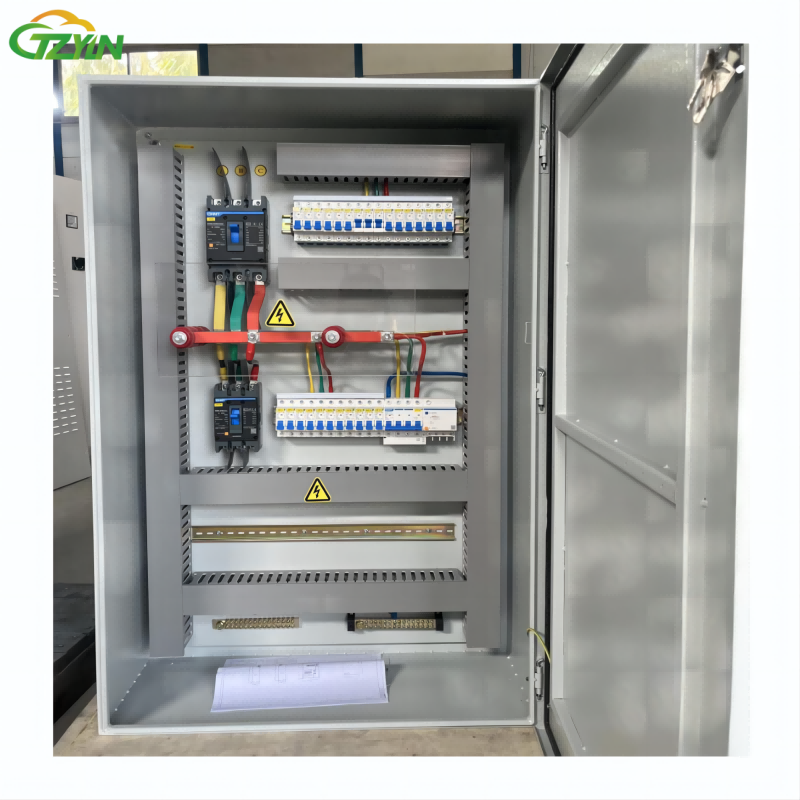Introduction to Lighting Distribution Cabinets
Lighting distribution cabinets are pivotal in the effective management of electrical power in commercial and industrial settings. They serve as the cornerstone of power management systems, distributing electrical power efficiently across various operations. By integrating advanced technologies, these cabinets ensure the smooth function of operational technologies without interruptions. In commercial settings, proper implementation of lighting distribution cabinets aligns with the National Electric Code, drastically reducing electrical hazards. This compliance not only enhances overall safety but also optimizes energy utilization, ensuring that businesses run smoothly and reliably.
Role in Commercial and Industrial Power Management
Lighting distribution cabinets have a critical role in managing electrical power across commercial and industrial environments. These cabinets distribute power efficiently, ensuring operational technologies function without interruption. By integrating advanced technology, they enable real-time monitoring and adjustments to power distribution. This capability ensures that the systems are responsive to the dynamic needs of a commercial environment. According to the National Electric Code, proper implementation of these systems significantly reduces electrical hazards, enhancing the safety standards in these environments. Furthermore, they help in effective demand response strategies, ensuring cost-saving and optimized energy consumption.
Ensuring Safety and Operational Continuity
Safety and operational continuity are central considerations in the design of lighting distribution cabinets. These cabinets come equipped with safety features that protect both equipment and personnel from electrical faults. Regular maintenance is crucial, as it allows for the identification of potential issues that could lead to costly downtime if left unchecked. Many cabinets are designed with emergency shut-off systems and alarms that provide immediate responses to electrical failures, preventing accidents and maintaining operational smoothness. Research from the Electric Power Research Institute highlights that implementing proper safety protocols in distribution systems reduces incident rates by over 30%, underscoring the critical role of safety features in these systems. These strategic safety elements ensure that businesses operate effectively and securely, safeguarding both personnel and infrastructure.
Key Features of Lighting Distribution Cabinets
Modular Design – Easy customization and scalability.
The modular design in lighting distribution cabinets offers unparalleled flexibility for businesses. This design allows for easy customization and scalability, enabling companies to adjust their systems as operational needs evolve. By utilizing modular components, businesses can save significantly on installation costs and simplify upgrades, setting them apart from conventional fixed systems. Moreover, adapting lighting setups becomes seamless, accommodating new industry regulations and technological advancements with ease. According to statistics, companies employing modular systems experience a 25% faster installation time, emphasizing the efficiency and adaptability of this design approach.
Circuit Protection – Built-in breakers and surge protection.
Circuit protection is a paramount feature in lighting distribution cabinets, safeguarding systems through integrated circuit breakers and surge protection devices. Built-in circuit breakers provide swift defense against overloads and short circuits, effectively protecting both the cabinet and connected equipment. Additionally, surge protection devices are vital in defending against transient voltage spikes that could damage sensitive electronic equipment. Regular testing and maintenance of these systems are crucial, potentially extending the lifespan of electrical equipment by up to 50%. Industry standards emphasize the importance of adequate circuit protection measures to maintain compliance and ensure overall safety.
Energy Efficiency – Smart controls and load management.
Lighting distribution cabinets designed for energy efficiency utilize smart controls for optimal energy consumption and load management. These advanced systems allow businesses to enjoy significant cost savings on utility bills, potentially reducing overall energy costs by 20-30%. The integration of load management systems enables adjustments in lighting based on occupancy, ambient light levels, and business hours, enhancing sustainable operations. The Department of Energy reports that smart energy management in commercial settings not only improves sustainability but also contributes to marked financial savings over time.
Durability & Safety – Fire-resistant materials and secure enclosures.
Durability and safety are central to lighting distribution cabinets, which are constructed using fire-resistant materials to minimize fire-related risks. These fire-resistant materials adhere to stringent safety regulations, effectively preventing accidents. Secure enclosures protect internal components from unauthorized access, reducing risks of tampering or sabotage. Additionally, these enclosures are designed to withstand various environmental conditions, ensuring safety from dust and moisture. Data from the International Fire Code highlights that fire-resistant cabinets significantly prevent widespread fire damage, safeguarding commercial properties efficiently.
Remote Monitoring Capabilities – Integration with smart systems.
Lighting distribution cabinets equipped with remote monitoring capabilities greatly enhance operational oversight and maintenance efficiency. This technology allows operators to track performance, diagnose issues, and troubleshoot problems remotely without needing on-site visits. By integrating with building management systems, these cabinets boost control over lighting and energy usage, thus improving overall operational efficiency. Real-time alerts and notifications prevent small issues from escalating into major disruptions. Recent studies have shown that companies using remote monitoring capabilities can save up to 40% in maintenance costs, highlighting the economic and functional benefits of this feature.
Applications in Different Industries
Lighting distribution cabinets are versatile and applicable across a variety of industrial sectors, making them indispensable for logistics, manufacturing, and commercial real estate. These cabinets play a vital role in warehouses, ensuring efficient lighting distribution that enhances both safety and productivity. They are particularly crucial in factories, where robust lighting systems support manufacturing processes and ensure employee safety. In office buildings, these cabinets provide energy-efficient solutions that significantly reduce operational costs. Moreover, public spaces, such as parks and parking lots, rely on these systems to ensure reliable lighting that boosts public safety.
Additionally, these cabinets incorporate advanced technologies that streamline various industrial operations. The seamless integration with smart systems allows for optimized energy usage and real-time monitoring, contributing to cost savings and sustainability. Whether it is ensuring efficient lighting in expansive spaces like warehouses and factories or optimizing illumination for offices and public areas, lighting distribution cabinets offer tailored solutions for diverse industry needs. The adoption of such systems across different industries highlights their versatility and crucial role in modern infrastructure.
Conclusion: How to Select the Right Cabinet Based on Specific Needs
Selecting the right lighting distribution cabinet is crucial to meet specific requirements efficiently. Consider factors like application environment, power needs, and safety standards. Tailor hardware specifications to align with energy efficiency goals and ensure compatibility with existing systems.
FAQs
What are lighting distribution cabinets used for?
Lighting distribution cabinets are used for managing and distributing electrical power in commercial and industrial settings, ensuring efficient and safe power management.
How do lighting distribution cabinets enhance safety?
These cabinets enhance safety by being equipped with safety features like emergency shut-off systems and circuit protection, reducing the risks of electrical hazards.
What industries benefit from lighting distribution cabinets?
Industries such as logistics, manufacturing, and commercial real estate benefit from lighting distribution cabinets due to their ability to efficiently manage lighting and energy consumption.
Why is modular design important in lighting distribution cabinets?
A modular design is important because it allows for easy customization and scalability, adapting to changing operational needs and simplifying upgrades.
Table of Contents
- Introduction to Lighting Distribution Cabinets
-
Key Features of Lighting Distribution Cabinets
- Modular Design – Easy customization and scalability.
- Circuit Protection – Built-in breakers and surge protection.
- Energy Efficiency – Smart controls and load management.
- Durability & Safety – Fire-resistant materials and secure enclosures.
- Remote Monitoring Capabilities – Integration with smart systems.
- Applications in Different Industries
- Conclusion: How to Select the Right Cabinet Based on Specific Needs
- FAQs




